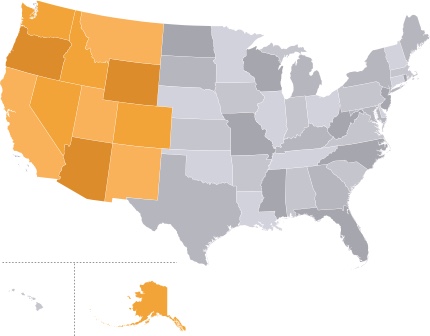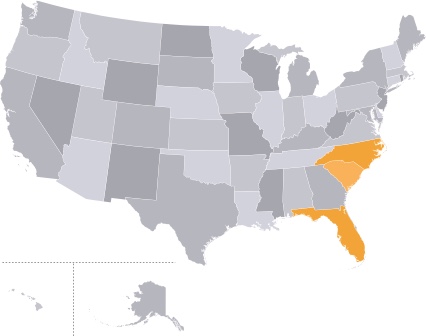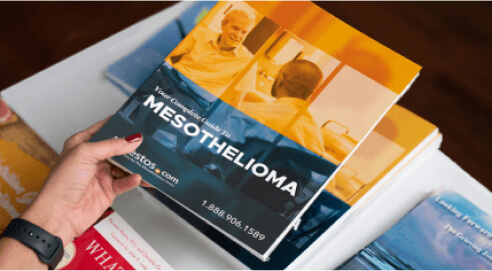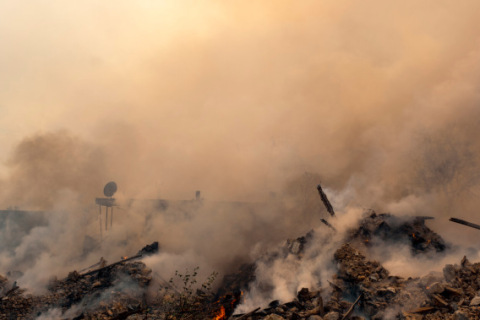
Asbestos and Natural Disasters Guide
Written by Michelle Whitmer | Edited By Walter Pacheco | Scientifically Reviewed By Arti Shukla, Ph.D.

Natural disasters such as wildfires, hurricanes, floods and tornadoes can damage asbestos-containing materials and lead to asbestos exposure among first responders, cleanup crews and nearby residents. Learn how to prevent asbestos exposure when preparing for and cleaning up after a natural disaster.
How Is Asbestos a Risk During a Natural Disaster?
A large number of homes and commercial buildings constructed prior to the 1980s were built with asbestos materials. Those products are considered safe as long as they are in good condition. But once ripped, broken, burned, blown or washed away, the products release toxic asbestos fibers into the air.
Breathing in these fibers in the aftermath of a natural disaster can lead to serious health conditions years later. The more someone is exposed to asbestos, the higher their risk of developing asbestos-related diseases such as a cancer called mesothelioma.
Natural disasters pose dangers from the moment they occur. People don’t often consider health risks after a tornado rips through their neighborhood or a flash flood destroys their personal possessions.
Asbestos exposure isn’t an immediate danger such as live electrical wires, gas leaks or unstable infrastructure. It also isn’t as apparent as more obvious health risks such as black mold. Asbestos fibers are microscopic and travel by air or in clouds of dust, so you can be exposed and not even know it.
It is essential to consider and properly prepare for asbestos exposure prevention when planning for natural disasters and severe weather. Knowing how to keep safe from asbestos after a disaster can help prevent health conditions later in life.
Who Is at Risk of Asbestos Exposure During a Disaster?
As the first people on the scene, emergency response crews and early response volunteers face an increased risk for asbestos exposure in the wake of a natural disaster because of all the debris. The risk of health effects increases over time and depends upon frequency and amount of exposure to asbestos to these workers.
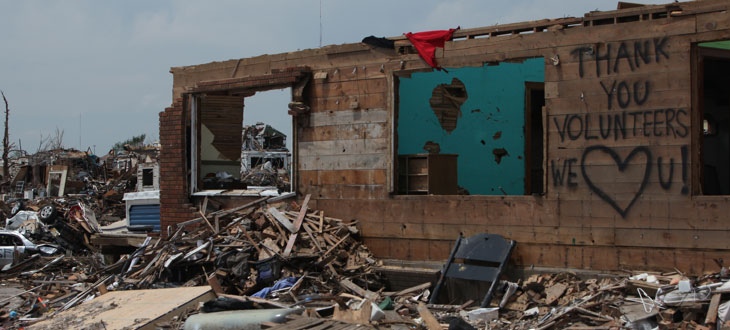
Top First Responder Occupations at Risk
- Firefighters
- Law enforcement officials
- Emergency response workers (FEMA, American Red Cross, etc.)
- Enlisted military (Coast Guard, Navy, Army, etc.)
- Cleanup crew members (private contractors, state and local agencies,volunteers)
Homeowners of damaged properties also face these risks and should alwaysuse caution when cleaning or searching through debris.
Products Containing Asbestos
There are dozens of asbestos-containing products in older construction such as single-family homes, apartment complexes, office buildings, churches and schools. These products are considered safe if they are in good condition and left undisturbed in walls, floors and the ceilings and roofs of structures.
But natural disasters pose a threat to these products which can be damaged by winds, fires, floods and earthquakes.
If asbestos-containing materials are suspected during cleanup efforts, experts recommend you leave them alone. Stirring up asbestos-containing debris can result in airborne asbestos fibers, and exposure is highly likely at that point.
Common Household Materials Containing Asbestos
- Roofing felt
- Pipe lagging
- Block insulation
- Adhesives
- Appliance components
- Ceiling products
- Cement board
- Gardening products
- Flooring
- Paints
- Roofing
- Table pads
- Wallboard
- Insulation
- Fireplace decorations
- Taping compounds and plasters
- Electrical insulation and panels
- Heating and cooling systems
Asbestos Exposure Prevention After a Disaster
Different types of natural disasters present a variety of asbestos exposure risks. For example, tornados may carry asbestos debris from one location to another, while floods may contaminate local waterways and neighborhoods with asbestos materials.
Fires present a greater risk to firefighters than other emergency responders. Hurricanes pose a variety of exposure threats from related tornados and flooding.
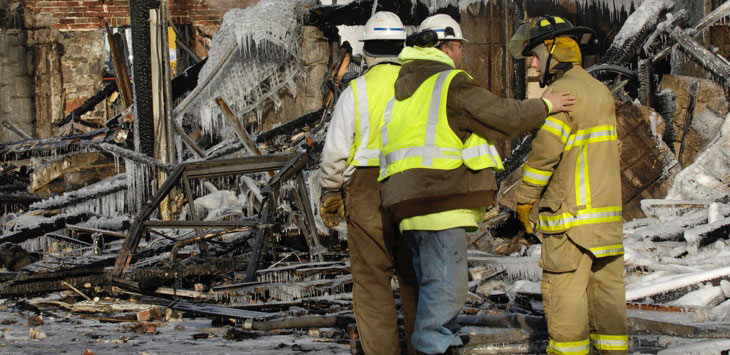
Consider these tips to minimize asbestos exposure:
- If materials must be moved, wet them first so that the fibers are less likely to become airborne. Asbestos abatement contractors will be familiar with proper removal and disposal regulations. In each state, there are regulations that govern the removal and management of asbestos-containing materials after a natural disaster. You can find these requirements by locating the local EPA in your state.
- Use only properly fitted NIOSH-Approved, N-100 or P-100 respirators. Do not use basic paper or fiber dusk masks, handkerchiefs or other, lower-grade air respirators, which will provide you with little or no protection from asbestos fibers.
- Wet or cover asbestos-related debris to minimize dust, and always wear additional protective gear, such as boots, coveralls and gloves during removal.
- Double-bag all building debris.
- Enclose the work area with plastic sheeting and duct tape to minimize dust.
- Only disturb construction materials that must be removed and minimize any excess breakage to prevent the release of dust and fibers into the air.
- Be sure to thoroughly shower and wash once you have completed debris removal to remove any dust and fibers that could become airborne.
- It is recommended to properly dispose of your clothes or wear disposable coveralls when handling asbestos materials. Washing clothes covered in asbestos dust or tiny fibers interwoven into the fabric can lead to exposure for you and your family members.
Make a Natural Disaster Emergency Plan for Your Family
People with cancer have more to consider and prepare for when planning for a natural disaster. Having an emergency plan in place that your family is on board with can help considerably when disaster strikes.
It’s also a good idea to talk to your oncologist before developing your plan. Ask for important contact information and steps you should take in case a disaster causes any changes to your treatment schedule.
Your Emergency Plan Should Include:
- Where you plan to shelter
- Your best evacuation route
- How your family plans to communicate
- How you’ll care for pets
- How you’ll access emergency updates, alerts and warnings
- Where safety supplies, such as face masks, gloves and goggles, are stored
- Contact information for your oncologist, veterinary office, local police, fire department and utility companies
- Email and phone numbers of your family members, neighbors and other important personal contacts
In addition to sharing digital copies of your plan with your family, make sure each person has a printed copy. You may want to share your plan with extended family members and trusted neighbors in case you need to rely on them during or after a disaster.
What to Look for on a NIOSH-Approved Facepiece Respirator
Only a filter rating designation of 100 will protect you against microscopic asbestos fibers in the air. N-100 and P-100 respirators filter at least 99.97% of airborne particles. Filters with the “P” designation are also strongly resistant to oily particles.
These masks will also protect you from other hazards such as mold damage. They can be purchased online or at your local home improvement store. Disposable masks generally cost around $10 each, while half-mask or full-face respirators can be $50 or more.
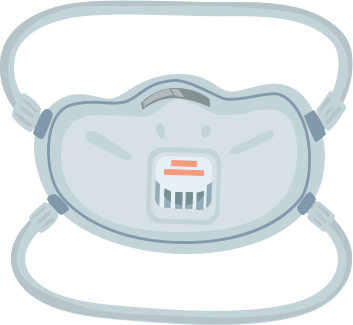
Respirators Must Contain
- Manufacturer’s name
- Model number or part number
- TC-Approval Number: Required for products manufactured after September 2008
- Filter Designation: Must be N-100 or P-100
- NIOSH name or logo
Other Protective Equipment You Should Wear During Asbestos Cleanup
- Protective clothing, preferably disposable
- Helmet to prevent fibers from attaching to hair
- Safety glasses or goggles
- Safety gloves
- Protective boots
Wildfires and Asbestos Exposure
Wildfires pose a threat for asbestos exposure as they move into cities and residential neighborhoods with structures built before 1980, when asbestos was commonly used in construction.
When these structures catch fire, asbestos products become damaged and release carcinogenic fibers that become airborne and transportable in smoke.
According to the Congressional Research Service, there are an average of 67,000 wildfires each year and 7 million acres burned annually. In 2018 alone, more than 58,000 wildfires burned nearly 9 million acres nationwide.
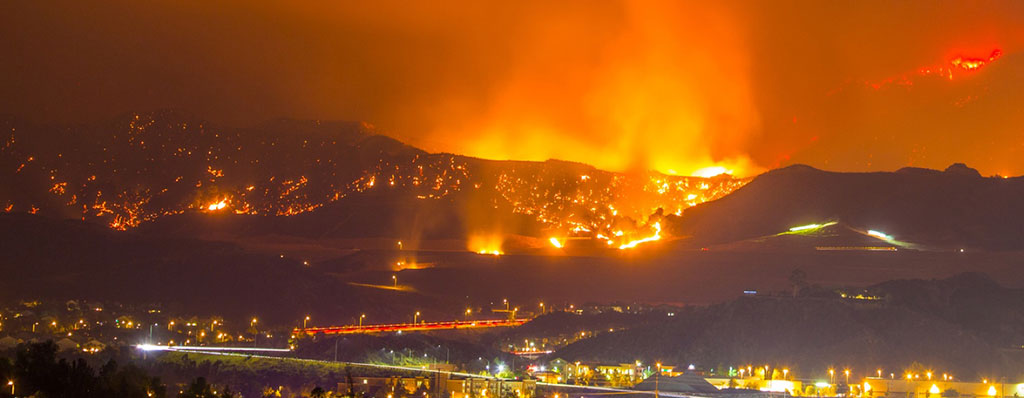
Where Are Wildfires Most Prevalent in the US?
Wildfires most commonly occur in the East, including the central states. However, fires in the West are the largest and burn the most acreage.
States Most Affected by Wildfires
- California
- Arizona
- Montana
- Nevada
- Oregon
- New Mexico
- Idaho
- Utah
- Washington
- Wyoming
- Colorado
- Alaska

In 2018, 87% of the acreage burned in the East was nonfederal land, while 63% of the acreage burned in the West was on federal land such as national forests and national parks.
Asbestos Exposure Prevention Tips for Wildfires
If there is a wildfire in your area, get to safety right away. Evacuate if you are told to do so and know your community’s evacuation routes.
According to Ready.gov, FEMA’s national public service campaign encouraging Americans to plan ahead for disasters, it recommends using an N-95 mask to prevent breathing in airborne particles. But these masks are not designed to filter finer particles such as asbestos fibers.
Only an N-100 or P-100 respirator will properly filter out tiny asbestos fibers that may be mixed with smoke and ash.
If your home or neighborhood was built before 1980, you are at higher risk of asbestos exposure from a wildfire. But keep in mind that wind can blow smoke, soot and ash for miles, potentially exposing residents in nearby communities to asbestos fibers mixed into these particles.
Helpful Tips Before and During a Wildfire
- Have an N-100 or P-100 disposable respirator mask in your emergency supply kit. Make sure you have a mask for yourself and each member of your family. Use these masks when exposed to the wildfire’s smoke and ash.
- Designate a room that can be closed from outside air, and make sure all doors and windows are firmly shut.
- Have a portable air cleaner or air purifier on hand to keep indoor pollution levels low when smoky conditions exist.
- If you are not ordered to evacuate, stay inside in a safe location where smoke levels are minimal.
Cleaning After a Wildfire
- Wet down any possible asbestos-containing materials before handling them.
- Wear your NIOSH-approved N-100 or P-100 mask at all times.
- Seal immobile materials with plastic sheeting and duct tape.
- Wet wipe or use a vacuum with a HEPA filter (high-efficiency particulate air filter) on nonmovable objects to keep asbestos from becoming airborne.
- Clean up soot and ash using a HEPA vacuum.
- Double-bag all debris.
- Do not move any damaged construction materials (drywall, flooring, insulation) unless it’s absolutely necessary.
Seek help from a qualified asbestos abatement company if you believe large quantities of asbestos materials were damaged during a fire. These professionals are trained in decontamination and safety procedures.
Resources for Wildfire Safety
- The National Interagency Fire Center is the nation’s support center for wildland firefighting. It has the latest wildfire information, along with safety and training programs.
- InciWeb, a product of the National Wildfire Coordinating Group, has an interactive map of wildland fire emergencies and prescribed fires. It also can be used for tracking other natural disasters such as hurricanes and earthquakes.
- The Insurance Institute for Business & Home Safety is a nonprofit organization supported solely by property insurers and reinsurers. Its website has helpful tips on protecting your home and business from wildfires, including retrofit guides specific to certain states and regions of the U.S.
- The CDC has a list of NIOSH-approved N-100 respirators that can be used for asbestos exposure prevention during wildfires.
Hurricanes and Asbestos Exposure
Hurricanes present three primary sources of destruction: Powerful winds, storm surge and rain. Storm surges lead to flooding along coastlines, damaging homes, hotels and public spaces. Powerful winds and tornadoes can destroy homes and buildings, while heavy rains cause flash floods.
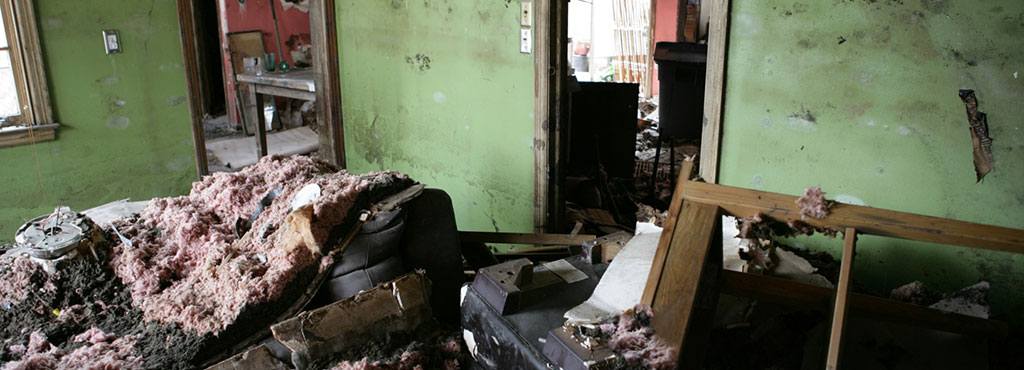

9,375,000 cubic feet of debris transported from New Orleans homes to nearby landfills following Hurricane Katrina contained asbestos.
Debris can expose homeowners, emergency workers and volunteers participating in the cleanup process to hazardous materials that can contain asbestos. The amount of debris that piles up after a hurricane is significant and can quickly overwhelm a community and breakdown normally strict guidelines for handling hazardous materials.
Hurricanes most often impact the East Coast and Gulf Coast of the United States. In 2022, hurricane Ian devastated much of the East Coast between Florida and South Carolina.
States Hit the Most by Hurricanes
How to Prevent Asbestos Exposure After a Hurricane
The most important thing you can do to protect yourself from asbestos exposure after a hurricane is to wear safety equipment during cleanup and restoration efforts. This includes a NIOSH-approved N-100 or P-100 respirator and other protective gear such as googles, gloves, boots and disposable coveralls.
Cleaning After a Hurricane
- Wet down any debris that may contain asbestos. This is a basic abatement procedure that reduces fiber release. Amended water (water mixed with surfactant chemicals such as dish soap) is often used to wet asbestos-containing materials (ACMs) during repair or removal operations.
- Double-bag materials while wet. If ACMs are highly friable, such as attic insulation, it should be sealed in a leak-tight container while wet, labeled and disposed of in a landfill qualified to receive asbestos waste.
- Wear a NIOSH-approved respirator mask at all times and use a vacuum with a HEPA filter to clean up dust, ash and other particulate matter.
Resources for Hurricane Safety
- The Federal Emergency Management Agency’s (FEMA) Ready.gov/hurricanes has information on preparing for and surviving a hurricane.
- The National Hurricane Center has live tracking of tropical depressions, tropical storms and hurricanes for the Atlantic, Eastern North Pacific and Central Pacific regions.
- FEMA’s recovery resources page includes tools to help you find short- and long-term shelter options and locate Disaster Recovery Centers near you.
- States heavily affected by hurricanes have dedicated websites for storm planning. The Florida Division of Emergency Management allows you customize your own family or business emergency plan, while the North Carolina Department of Public Safety has specific information for residents on what to do before, during and after a hurricane.
How to Prevent Asbestos Exposure from Other Disasters
While wildfires and hurricanes pose high risks for asbestos exposure, so do other natural disasters such as floods, tornados and earthquakes.
The key concern is the damage these disasters can cause to older homes, buildings and other structures containing asbestos materials such as drywall, insulation, floor tile and sheet roofing.
Knowing how to protect yourself and your family from asbestos during and after these natural disasters is essential to your long-term health.
Floods
Asbestos was used in more than 3,000 construction materials and manufactured products and was used as a part of new home construction or remodeling until 1980.
A home affected by flood waters becomes a source of asbestos exposure because damaged flooring, drywall and ceilings may contain asbestos. Water can damage even the strongest structures and disturb asbestos products in ways that release fibers when the material dries.

Naturally Occurring Asbestos and Flooding
Floods can also disturb naturally occurring asbestos deposits. Asbestos fibers from natural deposits are easily carried by flood waters into communities and local water sources.
For example, in parts of the North Cascades in Washington, the toxic mineral was released by a slow-moving landslide and then was carried into the Swift River. When the river flooded, asbestos fibers were deposited into residents’ yards and homes.
Demolition and Cleanup After Floods
For severely damaged structures built before 1980, demolition should only be performed by individuals who are trained in the asbestos NESHAP regulations. A MDEQ-certified asbestos abatement supervisor should be on-site or available by phone to provide guidance and assistance.
All demolition workers should use equipment specifically designed to protect them from asbestos exposure during demolition and handling of debris, especially respirators that are required by OSHA regulations. It is recommended to wet the structure, and, if the walls are still standing, they should be wrapped to confine the asbestos particles.
Resources for Flood Planning and Flood Victims
- The U.S. Geological Survey tracks flood conditions and data nationwide. The site includes interactive maps and visualizations on current floods, high-flow conditions and regional and local flood alerts.
- In addition to preparation tips, the CDC has an Emergency Water Supply Planning Guide and information for emergency responders.
- The American Red Cross’ flood safety page has information on what to do before, during and after a flood as well as a flood safety checklist.
Tornados
Tornadoes can destroy property and potentially cause exposure to asbestos among people who clean up the debris. The EPA and several state-affiliated departments of health and natural resources have issued guidelines for effective management of asbestos building debris to minimize exposure.
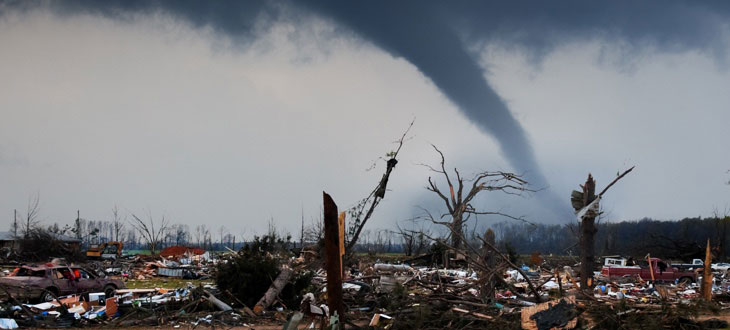
Cleaning After a Tornado
- Soak all suspected asbestos-containing materials in water mixed with surfactant chemicals (amended water). This will help reduce the amount of airborne fibers.
- Wear a NIOSH-approved N-100 or P-100 respirator mask at the disaster site.
- Contact the local EPA in your state and let them know if you believe the tornado has led to widespread asbestos contamination.
Resources for Tornado Safety and Response
- OSHA provides a directory of resources, including a tornado safety checklist from the American Red Cross and a Demolition Safety QuickCard.
- The National Weather Service details the difference between a tornado watch and a tornado warning and provides links to current tornado alerts in your area.
Earthquakes
Earthquakes are the vibrations caused by blocks of earth breaking and moving under stress. They strike suddenly, and often create significant damage to buildings and can also trigger tsunami waves that damage coastal communities.
In the U.S., earthquakes can strike any location at any time. However, most occur along the West Coast, primarily in California, according to the U.S. Geological Survey.
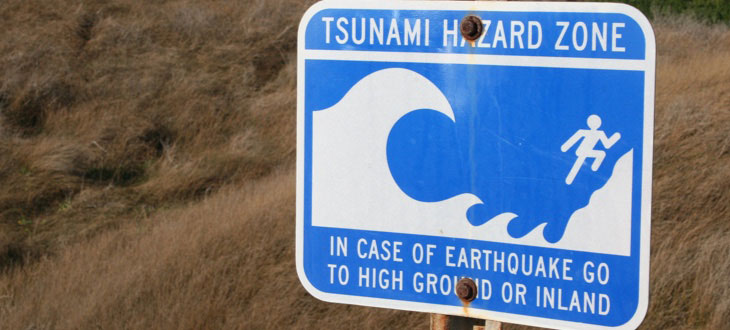
Asbestos Risks During Earthquake Cleanup
During cleanup of damaged and destroyed buildings after an earthquake, it is likely that there will be a need to handle, break up and dispose of asbestos-containing materials.
Much of this work may be undertaken by temporary laborers, volunteers and local residents who are unaware of the hazards of asbestos and who may be unable to identify asbestos products.
It is unlikely that the workers will initially be provided with appropriate personal protective equipment. Many people will also be unaware of abatement methods for the proper cleanup and removal of asbestos materials.
As a result of the cleanup operations, there may be an accumulation of asbestos-containing waste that will present a hazard to people in thelocal environment and those living in close proximity to the site offinal disposal.
Key Takeaways and Resources
It is important to be prepared and have a safety plan in place in the event natural disasters strike. But the after effects of these disasters are also a cause for concern.
The most important thing you can do to prevent asbestos exposure following a natural disaster is to have protective equipment on hand in an emergency response kit. This includes a NIOSH-approved N-100 or P-100 respirator for everyone in your household.
Secondly, remember this rule: If you’re not sure, don’t mess with it. When cleaning up after a wildfire or storm, always use caution.
Even with a protective mask, asbestos exposure can occur from fibers sticking to your clothes and exposing yourself or your family after cleanup efforts. Fibers could potentially be inhaled or ingested if your mask isn’t fitted properly.
If you know the cleanup site has damaged asbestos products, it is recommended to get the help of asbestos abatement professionals to remove and dispose of the materials safely and under EPA regulations.
Emergency Resources and Contacts
You can also contact these national emergency response organizations for help:
-
 FEMA
FEMA- Website: https://www.fema.gov/
- Phone: 202-646-2500 (general); 800-621-3362 (disaster survivors)
- Natural Disaster Recovery Framework
-
 American Red Cross
American Red Cross- Find Your Local Chapter
- Disaster Relief & Recovery Services
- Phone: 1-800-733-2767
-
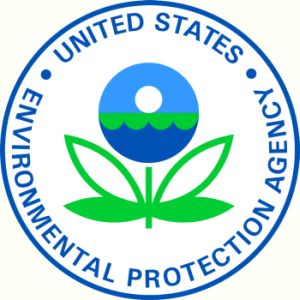 EPA
EPA- Natural Disaster Cleanup
- EPA Emergency Response
- Phone: 202-564-8600

